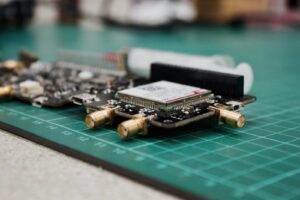The Impact of IoT-Enabled Predictive Maintenance on Inventory Management
Understanding the Role of IoT-Enabled Predictive Maintenance Systems in Reducing Wastage
IoT-enabled predictive maintenance systems are revolutionizing how businesses manage their spare parts inventory, offering a more efficient and cost-effective approach to maintenance and asset management. In industries where equipment reliability is critical, such as manufacturing and transportation, these systems provide valuable insights that allow businesses to predict when parts will fail and require replacement. By leveraging real-time data collected through IoT sensors, companies can optimize their spare parts inventory, ensuring that the right parts are available when needed, while reducing excess stock and minimizing wastage.
One of the primary benefits of implementing IoT-enabled predictive maintenance systems is the ability to forecast equipment failures before they occur. IoT sensors continuously monitor the condition of machinery and equipment, collecting data on factors such as temperature, vibration, and pressure. This data is then analyzed using advanced algorithms to identify patterns that indicate potential failures. By predicting when a part is likely to fail, businesses can schedule maintenance activities proactively, avoiding costly downtime and ensuring that the necessary spare parts are available without overstocking. In regions like Saudi Arabia and the UAE, where industries are rapidly modernizing, the adoption of IoT-enabled predictive maintenance is crucial for maintaining operational efficiency and reducing costs.
Furthermore, IoT-enabled predictive maintenance systems help businesses optimize their inventory levels by providing accurate forecasts of spare parts demand. Traditional inventory management often relies on historical usage data and manual estimates, which can lead to either overstocking or stockouts. With predictive maintenance, businesses can base their inventory decisions on real-time data, ensuring that they maintain just the right amount of spare parts. This approach not only reduces the cost of carrying excess inventory but also minimizes the risk of running out of critical components. For businesses in Riyadh and Dubai, where maintaining a lean and efficient operation is key to success, predictive maintenance offers a strategic advantage in inventory management.
Best Practices for Implementing IoT-Enabled Predictive Maintenance Systems
Designing a Predictive Maintenance Strategy
When deploying IoT-enabled predictive maintenance systems, it is essential to design a strategy that aligns with the specific needs and goals of the organization. This involves conducting a thorough assessment of the equipment and assets that are critical to operations, identifying the most common failure modes, and determining the data points that need to be monitored. By understanding the unique maintenance requirements of their equipment, businesses can tailor their predictive maintenance strategy to achieve optimal results. In markets like Saudi Arabia and the UAE, where industries are diverse and fast-paced, a well-designed predictive maintenance strategy can significantly enhance operational efficiency and reduce costs.
Integrating Predictive Maintenance with Existing Systems
A key factor in the success of IoT-enabled predictive maintenance systems is their integration with existing enterprise resource planning (ERP) and asset management systems. Seamless integration ensures that data collected from IoT sensors is accurately reflected in the organization’s maintenance schedules, inventory levels, and procurement processes. By integrating predictive maintenance with ERP systems, businesses can automate the entire maintenance workflow, from identifying a potential failure to ordering the necessary spare parts and scheduling repairs. In regions like Riyadh and Dubai, where technological innovation is a priority, integrating predictive maintenance with existing systems is essential for maximizing the benefits of digital transformation.
Training and Support for Predictive Maintenance Implementation
Effective implementation of IoT-enabled predictive maintenance systems requires adequate training and support for the personnel responsible for managing and maintaining the equipment. Employees need to be trained on how to interpret the data provided by IoT sensors, use predictive analytics tools, and make informed decisions based on the insights generated. Additionally, businesses should establish a support system to address any technical challenges that may arise during the implementation and operation of predictive maintenance systems. In markets like Saudi Arabia and the UAE, where skilled labor is critical to the success of industrial operations, investing in training and support for predictive maintenance can enhance the overall effectiveness of these systems.
Conclusion: The Future of IoT-Enabled Predictive Maintenance Systems
The integration of IoT-enabled predictive maintenance systems is transforming how businesses manage their spare parts inventory, offering a data-driven approach that reduces wastage and optimizes inventory levels. By following best practices in strategy design, system integration, and employee training, organizations in Saudi Arabia, the UAE, and beyond can fully leverage the benefits of predictive maintenance. As industries continue to embrace digital transformation, IoT-enabled predictive maintenance will play an increasingly important role in maintaining operational efficiency, reducing costs, and ensuring the availability of critical spare parts. For business executives, mid-level managers, and entrepreneurs, adopting predictive maintenance systems is a strategic move towards achieving long-term success and sustainability.
—
#PredictiveMaintenance #IoTSolutions #InventoryManagement #DigitalTransformation #BusinessInnovation #SaudiArabiaInnovation #UAEBusinessSuccess #ModernTechnology #Riyadh #Dubai













